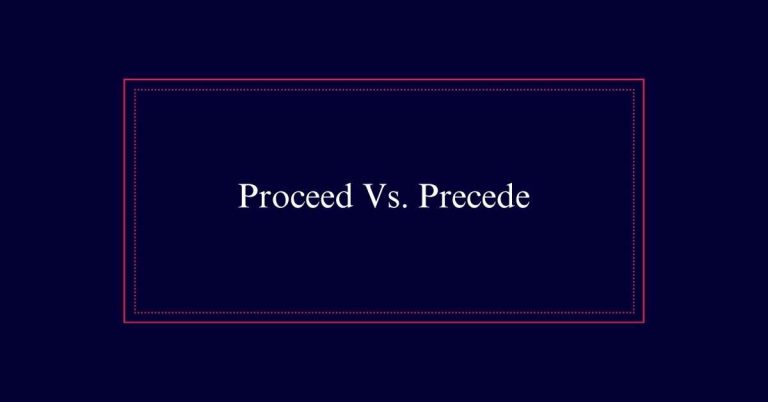How to Use “Alike” and “Same” Correctly?
To use “alike” and “same” correctly, remember that “alike” is an adverb and “same” is an adjective. “Alike” describes similarities in actions or qualities and follows the verb it modifies, such as “They think alike.” “Same” describes identical qualities in nouns and precedes the noun it modifies, like “We have the same schedule.”
Avoid using “alike” as an adjective or “same” as an adverb to maintain grammatical accuracy.
Difference Between Alike and Same
The difference between ‘alike’ and ‘same’ lies in their grammatical roles and how they modify other words in a sentence.
‘Alike’ is used as an adverb. It modifies verbs to show similarity in actions or qualities. For instance, ‘All great minds think alike’ is correct.
‘Same’ is an adjective. It modifies nouns to highlight identity or equality. For example, ‘The two scientists had the same ideas about the Big Bang’ is correct.
Using ‘alike’ as an adjective, such as in ‘The two scientists had alike ideas,’ is incorrect. Conversely, using ‘same’ as an adverb, like in ‘All great minds think the same,’ is also wrong.
Alike as an Adverb
When used as an adverb, ‘alike’ emphasizes the similarity in actions or qualities. It is placed after the verb it modifies to show how actions are performed similarly. For instance, in the sentence ‘The brothers think alike,’ ‘alike’ modifies ‘think’ to show that their thoughts are similar.
Below is a table illustrating the use of ‘alike’ as an adverb:
| Example Sentence | Explanation |
|---|---|
| ‘They sing alike.’ | Shows that both individuals sing similarly. |
| ‘The twins dress alike.’ | Indicates that their manner of dressing is similar. |
| ‘They both laugh alike.’ | Emphasizes that their laughter is similar. |
Alike: Proper Usage
How can one use ‘alike’ correctly to emphasize similarity in actions or qualities?
‘Alike’ is used to show that actions or qualities are similar. It modifies the verb in a sentence and should be placed after it.
To use ‘alike’ correctly, follow these guidelines:
- Positioning: Place ‘alike’ after the verb it modifies. For example, ‘They behave alike.’
- Purpose: Use ‘alike’ to emphasize how actions are performed similarly or how qualities are shared.
- Avoid Misuse: Do not use ‘alike’ as an adjective. For instance, ‘Their ideas are alike’ is incorrect; instead, use ‘Their ideas are similar.’

Examples of Alike
Consider these examples to understand how to use ‘alike’ correctly in sentences. Alike is an adverb and should follow the verb it modifies.
For instance, ‘The twins think alike’ highlights their similar thought processes.
Another example is, ‘The two projects are structured alike,’ showing that their designs are similar.
Notice how ‘alike’ emphasizes similarity in the way actions are performed or qualities are shared.
Incorrect usage would be, ‘The twins have alike clothes,‘ as ‘alike’ cannot modify the noun ‘clothes.’ Instead, use ‘similar’ or ‘the same.
Same as an Adjective
Same is frequently used as an adjective to describe nouns that share identical qualities or attributes. It serves to emphasize that two or more items are indistinguishable in certain respects. For example, one might say, ‘They wore the same dress to the party,’ meaning the dresses were identical.
To use ‘same’ correctly as an adjective, keep these points in mind:
- Before the Noun: Place ‘same’ directly before the noun it modifies, e.g., ‘the same book.’
- Definite Article: Often, ‘the’ precedes ‘same,’ e.g., ‘the same idea.
- Comparison: Use ‘same’ to compare two or more similar entities, e.g., ‘We have the same opinion.’
Same: Proper Usage
Building on the understanding that ‘same’ functions as an adjective to describe identical qualities or attributes, we now explore its proper usage in various contexts.
‘Same’ is used to emphasize identity or equality in the noun it modifies. For instance, saying ‘We have the same schedule’ means both parties share an identical timetable.
It is important to remember that ‘same’ should not be used to modify verbs. Incorrect usage, such as ‘They work the same,’ fails to convey the intended meaning properly. Instead, use ‘same’ to highlight identical nouns, as in ‘They have the same work ethic.’
Examples of Same
In illustrating the proper usage of ‘same,’ consider sentences like ‘They share the same office space,’ which emphasizes identical possession. The word ‘same’ is an adjective that highlights the identity or equality of the noun it describes.
Here are a few more examples to clarify its usage:
- ‘We attended the same school.’ – This indicates the identical institution for both subjects.
- ‘He wore the same shirt as yesterday.’ – This points to the identical piece of clothing.
- ‘Their opinions are the same.’ – This emphasizes identical viewpoints.
Sentence Structure Tips
Effective sentence structure is essential for using ‘alike’ and ‘same’ correctly. To guarantee clarity, place ‘alike’ after the verb it modifies. For example, ‘The twins think alike’ is correct. This structure emphasizes similarity in actions or qualities.
On the other hand, ‘same’ should be used to modify nouns. It must come before the noun it describes. An example of proper usage is, ‘They have the same interests.’ This sentence highlights identity or equality in the noun.
Avoiding Common Mistakes
Frequently, writers confuse the roles of ‘alike’ and ‘same,’ leading to common grammatical mistakes. Understanding their distinct functions can help avoid errors.
Using ‘alike’ as an adjective: ‘Alike’ is an adverb, not an adjective.
Incorrect: ‘Their ideas were alike.’
Correct: ‘Their ideas were similar.’
Using ‘same’ as an adverb: ‘Same’ is an adjective, not an adverb.
Incorrect: ‘They think the same.’
Correct: ‘They think alike.’
Misplacing ‘alike’ and ‘same’: Make sure proper placement in sentences.
Incorrect: ‘They have alike ideas.’
Correct: ‘They have the same ideas.’






